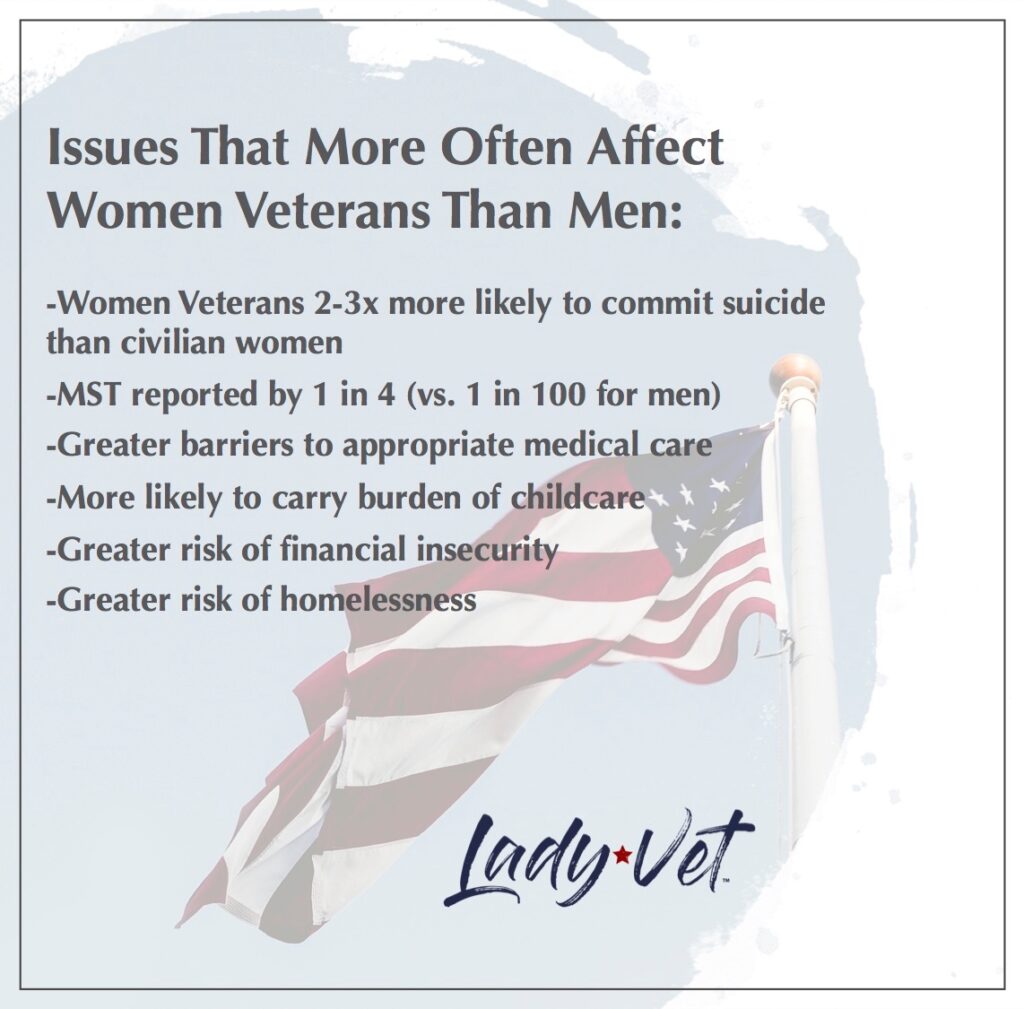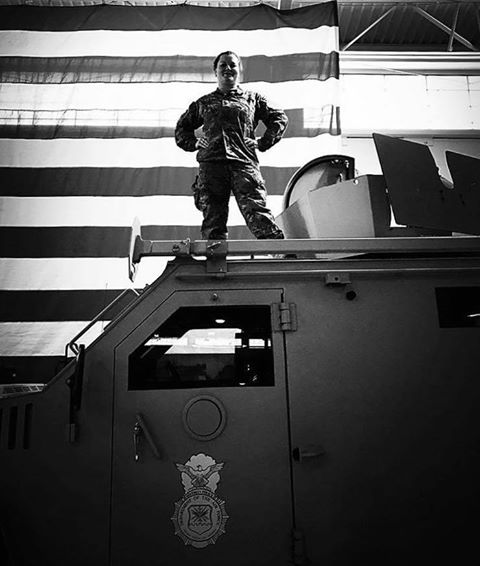While the military has long been dominated by men, it has never been a thing solely of their own making. Women were volunteering long before they were ever allowed to officially serve. In more recent decades, women in uniform have been breaking down barriers and opening doors at an unprecedented scale for those who would follow in their footsteps. And just like men, women eventually put aside that uniform and move onto other things—as Veterans—hopefully paying forward some of the experience and value gained from their time in the service.
COMMENTS RESERVED FOR WOMEN
Added to the challenge of reintegrating into civilian life, many women Veterans find themselves experiencing something more or less unheard of for their male peers.
“How long was your husband in the Army?”
“Can’t you read the sign? Only Veterans can park here.”
“I need the actual service member’s information before we can see you.”
“Spouses don’t get the military discount.”
“You look too pretty to be a Marine.”
“I didn’t think women were allowed in combat.”
“I don’t think women belong in the military.”
If you are one of the two million-plus women Veterans in the US, chances are you’ve heard some of these before. If you don’t fall into this category, it’s important to know that these are the mild end of a broad range of ways that women Veterans are mislabeled, overlooked and even dismissed—by men and women alike. Not 30 years ago, but right now in 2020.
You might hear snippets of this discussion in various places and wonder why it matters. Some might say we are complaining, looking for attention, or asking for opportunities to be handed to us simply because we are women. Others find the wave of changes taking place for women in all sectors of society to be welcome and long overdue. Since you’re here reading this, we’d like to ask a favor of you. Pause for a moment to check in on your own personal perspective.
When you think of a Veteran, what do you see?
As a society, we tend to envision either a burly bad-ass in the prime of life, rippling with muscle and ready to take down the enemy; or someone of an older generation carrying memories of a war we can’t even fathom, burdened by the physical and emotional scars of their experiences.
What we don’t see is a woman.
The truth is that women fit into these descriptions as well. Women in the prime of our lives, ready and willing to defend our brothers and sisters in arms and our nation as a whole. Some of us are operating tanks, commanding ships, piloting billion dollar aircraft. There are also women of every era and campaign carrying nightmares of war and scars that may never fully heal. When will we—society—begin to see women as Veterans? When will we stop assuming women are imposters? When will we stop looking beyond the woman who served to the man who is standing next to her?
When will we stop looking beyond the woman who served to the man who is standing next to her?
INVISIBLE VETERANS
The push for recognition of women who served is not a desire for attention. It is not an expectation of gratitude or praise. Some will even tell you that it doesn’t matter if other people misinterpret their service, because they know what they did for their country. This is an honorable and common approach that Veterans take, but it glosses over the intense and life-changing experience of serving one’s country, and does nothing to address the invisibility felt by the majority of women Veterans at one point or another.
The Armed Forces are still 100% volunteer, and women are now the fastest growing segment of both military and Veteran communities. A recent DAV report stated, “The population of women in these communities is growing more rapidly than the systems we have in place to support them. This has created an environment in which—whether intentional or not—women’s service to the nation is often less recognized, less respected and less valued than their male counterparts.”
While the female segment of these populations continue to grow, we also find ourselves in a unique position. Fighting on one hand for the right to exist and be seen on our own merits without being held back for the age-old reason of simply being female; while on the other, fighting to be taken seriously for issues that either exclusively or more often affect women than men.
Women Veterans are 2-3x more likely than civilian women to commit suicide.
Additionally, the risk for young women veterans is higher than for other age groups. Other pressing and persistent challenges for women post-military service include:
A higher risk for Military Sexual Trauma (MST) (reported by 1 in 4 women vs. 1 in 100 men), greater risk of homelessness, greater barriers to accessing appropriate medical care, increased likelihood of bearing the burden of childcare, greater risk of financial insecurity, and less options for support from community and vet organizations.


How can a Veteran in need receive appropriate care and services if they are seen as less-than, or not seen at all?
A THRESHOLD IN HISTORY
Women have been working hard to prove our worth and value in a military setting since long before we were invited; and we’ve worked harder still to gain access to the same opportunities, benefits and recognition that continue to be more easily afforded to men. While progress has accelerated rapidly in the past several decades, we are not 100% there yet.
But women are currently at an important threshold in history. For instance, this August will mark only 100 years in the US since women were allowed to vote on a national scale—and it would still take another 45 years for the voting rights of women of color to be enforced. Since then, we’ve gradually moved away from being a culture that sidelined women in almost every way to one that is increasingly welcoming of women as just as capable, competent and valuable as men. This centennial year is already proving to be one of opportunity, promise and potential for those who have something of value to contribute. We are witnessing more women step into a broader range of roles and responsibilities than ever before—in some cases for the first time ever—in every area of society, including the military.
Progress is happening. Where will it take us? Will we turn it into something lasting?
If you are a woman who served, now is the perfect time to make yourself more visible, in whatever way is best for you. Wear a shirt. Or have a conversation. Volunteer with one of the growing number of nonprofits working specifically to address the needs of women Vets, or host a fundraiser for one. Talking about your status as a Veteran is not self-serving—it serves us all, and helps us to step into the light. Visibility leads to acknowledgement. Acknowledgement opens the door to better opportunities, not to mention higher standards of care and service for women Veterans.
If you are not a member of this population, we’d love for you to be a part of the conversation. Ask questions. Learn something you didn’t know. Inventory your own perceptions of what a Veteran looks like, and be open to something new. We can’t normalize women’s presence or contributions in the military on our own. Like any broad cultural shift, it will take all of us: men, women, Veterans, civilians. Together, we can help broaden society’s perspective of what a Veteran looks like. The hope is that eventually, when you think of a Veteran, you see us all.


Do you have an experience to share with the Lady Vet Community? Connect with us at narratives@ladyvetusa.com for a chance to be featured on the Lady Vet blog.



Beautifully written and so well said! I love that you’re shedding light on such an important topic!
Thank you, Megan! We feel it’s a conversation definitely worth having. Thanks for your support!
Thank you for this! It’s true in several professions (I was a police officer for a half a minute back before kids) but probably none as much as in the military. You are doing great work!
Thank you, Sally – we appreciate your input AND your work as a police officer.
Pingback: The Persistent Problem of Sexual Assault in the Military — Lady Vet Blog
Pingback: What Does a Veteran Look Like? — Lady Vet Blog — Lady Vet
Excellent article. You are becoming a strong voice for women veterans.
Thank you, Jennifer. Lady Vet aims to lift the voices of all women who served. Thanks for reading!
Pingback: Lady Vet Blog — One Airman's Reality of Being a Woman in the Air Force
Pingback: Lady Vet — The Angels of Bataan — The Lady Vet Blog